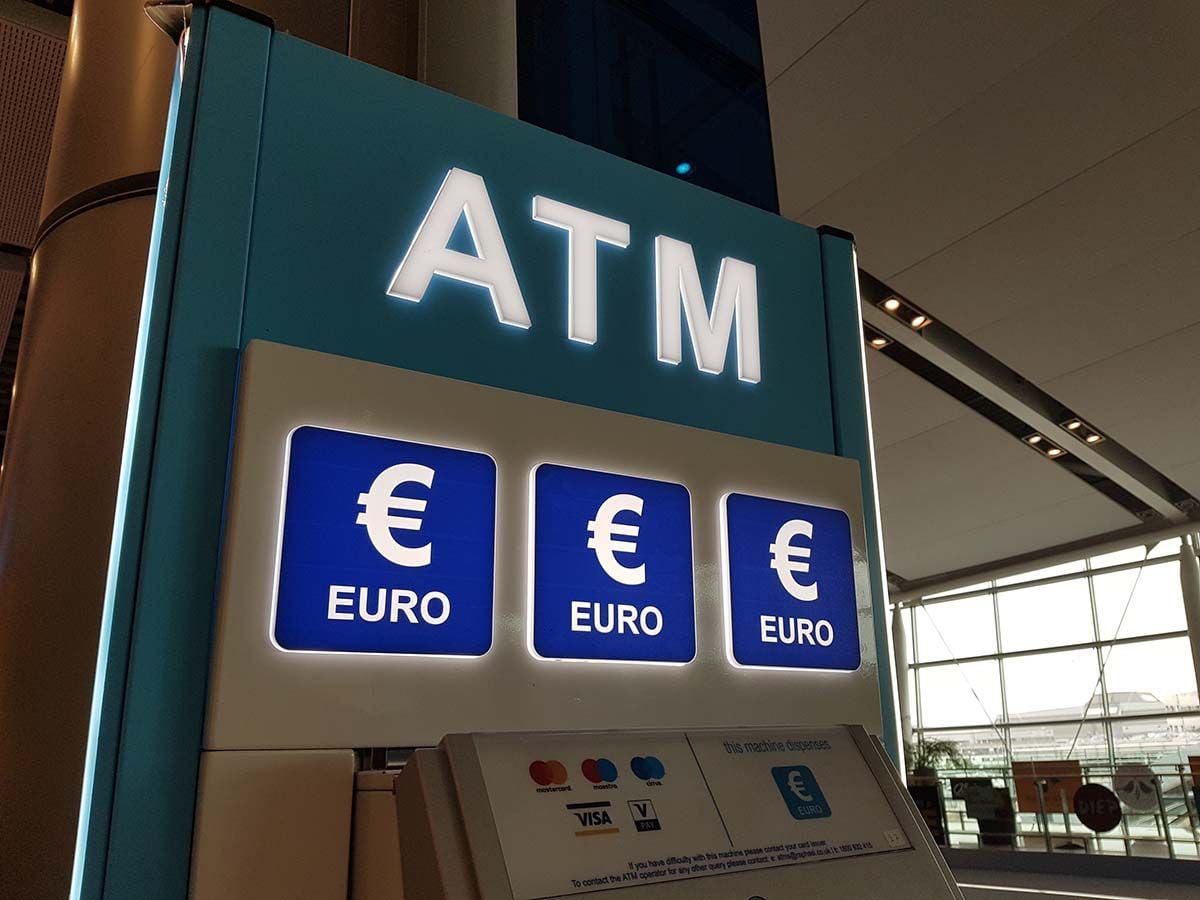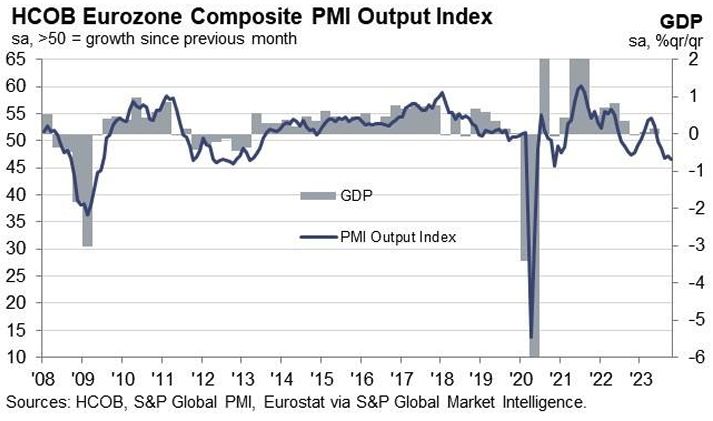Euro Falls After Eurozone PMIs Signal An Accelerating Downturn
- Written by: Gary Howes

Image © Pound Sterling Live
The Euro came under pressure after Eurozone PMI figures signalled the Eurozone's economic downturn accelerated at the start of the year's final quarter, after private sector output declined at the steepest rate for over a decade (pandemic excluded), according to S&P Global.
Manufacturing remains in the deep freeze, with a reading of 43 reported in October's S&P Global PMI survey, which is below the 43.7 the market was expecting and September's 43.4.
Services - which has been the sector propping up growth - is finally succumbing to higher interest rates with a slide to 46.5 from 47.2 previously and 47.4 expected.
The composite PMI, which gives an account of the broader economy, read at 47.8, down from 48.7 in September and below expectations for 48.7.
S&P Global says businesses in the Eurozone reported that new orders fell at an accelerating rate, pointing to a worsening demand environment for goods and services.
"In the Eurozone, things are moving from bad to worse. Manufacturing has been in a slump for sixteen months, services for three, and both PMI headline indices just took another hit. In addition, all subindices point very consistently downwards, too, with only a few exceptions," says Cyrus de la Rubia, Chief Economist at Hamburg Commercial Bank.
The Euro to Pound exchange rate slid 0.20% to 0.8694, and the Euro to Dollar exchange rate was 0.20% down at 1.0650.
"The EURUSD lost nearly 0.5% shortly after the data was released," says Alex Kuptsikevich, senior market analyst at FxPro. "The PMI indices have proven to be a reliable indicator of the economic cycle for currency and equity market investors. The latest preliminary estimates for October disappointed, showing a deepening of the recession rather than the expected improvement."
Compare Currency Exchange Rates
Find out how much you could save on your international transfer
Estimated saving compared to high street banks:
£25.00
Free • No obligation • Takes 2 minutes
The findings will cement expectations that the European Central Bank (ECB) will pause its interest rate hiking cycle, given evidence the economy is now witnessing a material slowdown.
The data meanwhile represents a negative growth surprise that is consistent with softer Euro exchange rates.
Fading expectations for further ECB rate hikes will also weigh on the Euro outlook, particularly given the PMI survey finds companies cut employment levels in October, representing the first drop in headcounts since the lockdowns of early 2021.
These findings will provide evidence the Eurozone labour market is loosening, which is deflationary and supports a view the ECB is done hiking.
Downside risks for the Euro will build if the market brings forward expectations for rate cuts in 2024.
The ECB will welcome news the rate of inflation for goods and services moderated slightly in October, down to its lowest since February 2021. An ongoing sharp fall in manufacturing selling prices was accompanied by a moderation in service sector selling price inflation, according to the survey.
"We wouldn’t be caught off guard to see a mild recession in the Eurozone in the second half of this year with two back to back quarters of negative growth," says de la Rubia.
"Perhaps, as in the previous cycle of rate hikes following the global financial crisis, the ECB will turn to easing earlier than the Fed. This is an important factor weighing on the euro against the dollar at a time when the carry trade has re-emerged as a market driver," says Forex.com's Kuptsikevich.
Compare Currency Exchange Rates
Find out how much you could save on your international transfer
Estimated saving compared to high street banks:
£25.00
Free • No obligation • Takes 2 minutes





